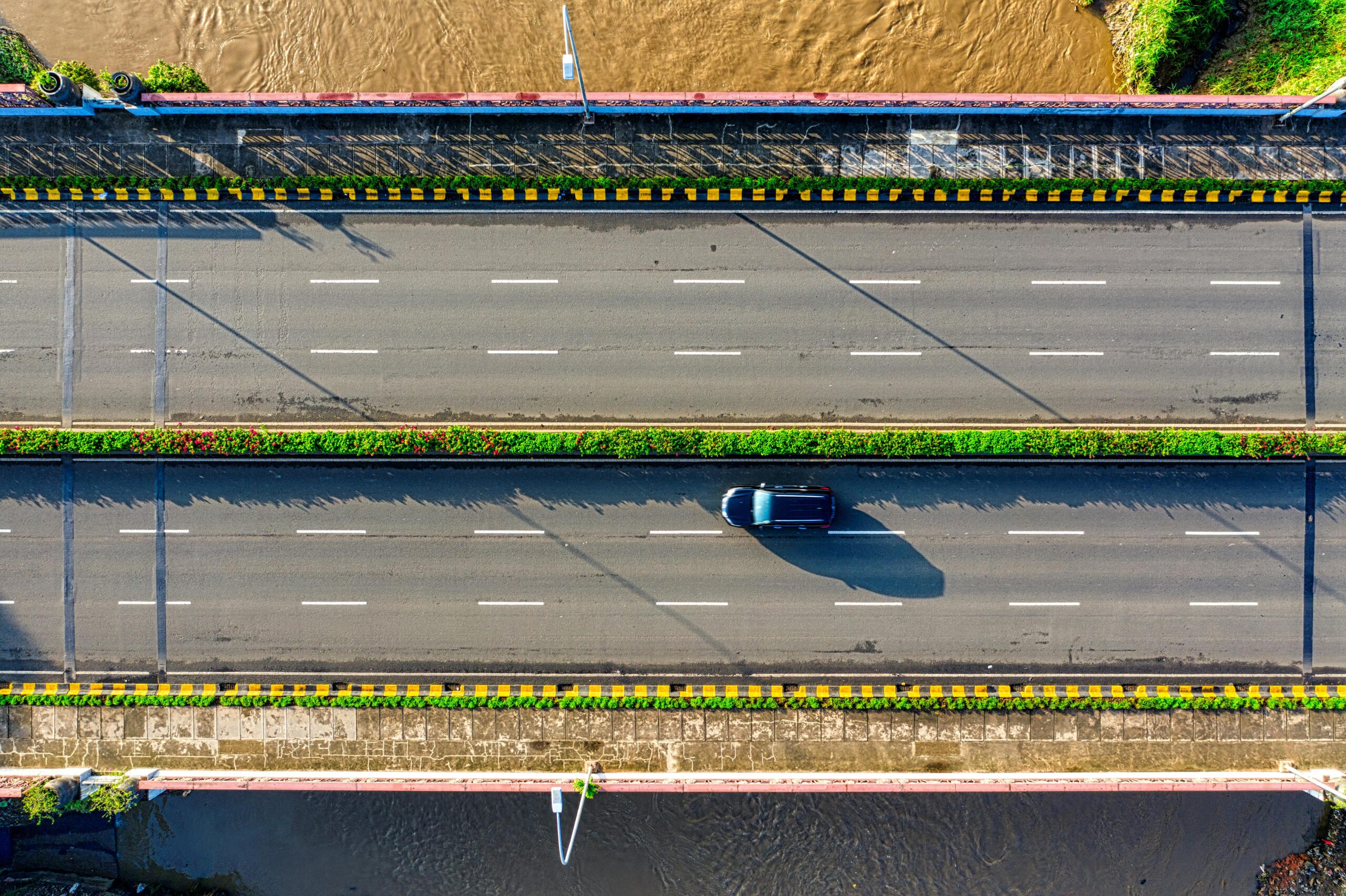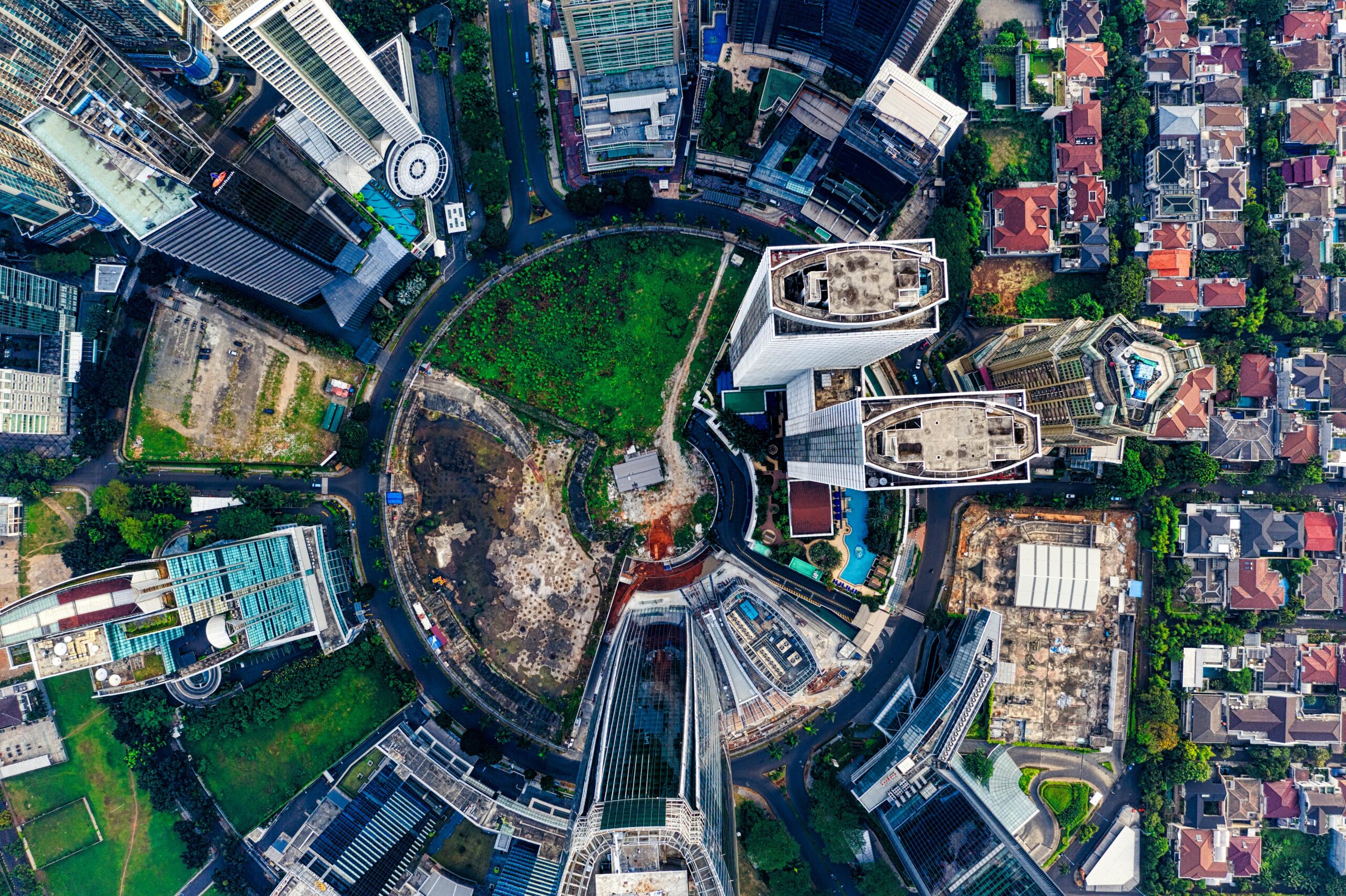The main uses of drones are revolutionising industries around the world. These versatile devices have proven to be more than just recreational tools, becoming essential for tasks ranging from power inspections to post-disaster rescues. With constant advancements in technology, the future for drones looks even brighter.
Drones are reshaping industries by offering safer, faster, and more cost-effective solutions. Their applications are expanding in 11 key sectors: power inspection, traffic monitoring, environmental protection, confirmation of rights, agricultural insurance, express delivery, post-disaster rescue, remote sensing surveying and mapping, forest fire protection, street view shooting, and filming. Each of these areas is seeing rapid innovation, with drones playing a vital role in improving efficiency and reducing risks.
In this article, we at The Drone Ranger explore how the main uses of drones are evolving and shaping the future across these sectors. Whether it’s capturing stunning footage, protecting the environment, or ensuring public safety, drones are driving change in ways that were once unimaginable. Join us as we dive into the future trends of drones and their growing importance in industries worldwide.
1. Power Inspections: Safer And Smarter Solutions
Power inspections are one of the main uses of drones, transforming how utility companies maintain critical infrastructure. Traditional methods of inspecting power lines, substations, and transmission towers often involve workers scaling heights or using helicopters, both of which are time-consuming, costly, and potentially hazardous. Drones provide a safer, faster, and more efficient alternative.
Equipped with high-resolution cameras and thermal imaging sensors, drones can easily identify faults, damage, or overheating components in power systems. This enables utility companies to carry out routine maintenance and prevent potential failures before they occur. Drones also minimise the need for disruptive shutdowns, allowing inspections to be conducted while systems remain operational.
In the future, the integration of artificial intelligence (AI) will make drones even more effective. AI-enabled drones will be able to automatically detect issues, classify them by severity, and generate actionable reports for engineers. This will not only save time but also improve the accuracy of inspections.
As sustainability becomes a priority, drones offer an environmentally friendly solution. By replacing fuel-powered helicopters, drones reduce carbon emissions and contribute to greener operations. The adoption of drones in power inspections is set to grow, making energy systems safer, more reliable, and more efficient.
2. Traffic Monitoring: Keeping Roads Efficient And Safe
Drones are transforming traffic monitoring by providing a bird’s-eye view of roadways and congestion. Traditionally, monitoring traffic relied on stationary cameras, ground teams, or helicopters, which have limitations in coverage and flexibility. Drones, however, can quickly cover large areas, offering real-time insights into traffic flow, accidents, and road conditions.
One of the key advantages of drones is their ability to respond to changing situations rapidly. For example, during major events or emergencies, drones can be deployed to assess traffic patterns and guide authorities in managing congestion. They provide live footage to traffic control centres, enabling quick adjustments to traffic lights or the creation of alternative routes.
In the future, drones will play a vital role in smart cities by integrating with traffic management systems. Advanced drones equipped with AI and data-sharing capabilities will analyse patterns, predict congestion, and even suggest improvements in road infrastructure. This will help city planners design safer, more efficient urban environments.
Drones are also becoming essential tools for emergency response teams. By reaching accident sites quickly, they provide vital visuals that allow authorities to assess the situation and dispatch the appropriate resources. As cities grow, the role of drones in ensuring road safety and reducing congestion will only increase.

3. Environmental Protection: Protecting Nature With Precision
Drones are playing a significant role in environmental protection, offering innovative solutions to preserve ecosystems and combat climate change. Their ability to access remote and challenging areas makes them invaluable for monitoring, conservation, and research efforts.
One of the main uses of drones in environmental protection is wildlife monitoring. Equipped with high-resolution cameras, drones can track animal movements, count populations, and observe behaviours without disturbing their natural habitats. This is particularly important for endangered species, where minimal human interference is crucial.
Drones are also effective tools for combating deforestation. They can survey large forested areas quickly, detect illegal logging activities, and even replant trees. Some advanced drones are already capable of planting seeds, making reforestation efforts faster and more efficient.
In addition, drones help monitor environmental factors like air quality, water pollution, and glacier melting. These real-time insights enable researchers to track the impacts of climate change and develop strategies to address them.
Future trends include drones equipped with even more sophisticated sensors for detecting micro-level environmental changes. With their speed, accuracy, and versatility, drones are empowering conservationists and researchers to protect our planet and build a sustainable future. Their impact on environmental protection continues to grow with each technological advancement.
4. Confirmation Of Rights: Accurate Land Mapping With Drones
Drones are revolutionising the way land mapping and property rights are confirmed, especially in areas where traditional surveying methods are difficult or inefficient. With their ability to capture high-resolution aerial images and generate accurate maps, drones are helping individuals, businesses, and governments streamline the process of confirming property boundaries and land rights.
One of the main uses of drones in this area is resolving disputes. Property disagreements often arise due to unclear boundaries or outdated records. Drones provide precise and up-to-date aerial visuals that make it easier to identify and document land divisions, reducing conflict and saving time.
Governments are also turning to drones to support land registration efforts. In rural and remote regions, where access is limited, drones can quickly survey large areas and produce detailed maps. This ensures that landowners can receive formal documentation, contributing to economic growth and stability.
Future trends in this field include drones equipped with advanced imaging sensors, capable of creating 3D models of landscapes. These models will further enhance the accuracy of land surveys and allow stakeholders to visualise terrain and property layouts effectively. By making land mapping faster, cheaper, and more reliable, drones are paving the way for better land management worldwide.
5. Agricultural Insurance: Helping Farmers Secure Their Futures
Drones are becoming essential in the agricultural insurance industry, offering a faster and more accurate way to assess crop health, evaluate losses, and streamline claims. For farmers, the main uses of drones extend beyond monitoring fields—they are now tools for safeguarding livelihoods.
After natural disasters like floods, droughts, or storms, drones can survey damaged crops with precision. Their high-resolution cameras and advanced sensors capture detailed imagery, allowing insurers to assess the extent of losses quickly. This eliminates the need for lengthy on-site inspections and ensures that farmers receive compensation in a timely manner.
Drones also play a proactive role in risk assessment. By monitoring fields throughout the growing season, drones can identify issues such as pest infestations or water stress, helping farmers address problems early. Insurers can use this data to develop more accurate policies tailored to specific risks, providing better coverage for farmers.
Future trends in agricultural insurance include drones equipped with AI-powered analytics. These drones will not only capture images but also analyse crop health, soil quality, and yield potential, offering deeper insights into risks. By improving transparency and efficiency, drones are revolutionising agricultural insurance, ensuring farmers have the security and support they need to thrive.
6. Express Delivery: Faster, Greener Logistics Solutions
The use of drones in express delivery is reshaping how goods are transported, offering faster and more sustainable solutions. Companies are investing heavily in drone delivery systems to overcome challenges like traffic congestion, remote locations, and rising environmental concerns.
One of the main uses of drones in this sector is the rapid delivery of small parcels, such as medical supplies, groceries, and e-commerce packages. Unlike traditional delivery vehicles, drones can fly directly to destinations, cutting delivery times significantly. For example, in rural areas where access can be difficult, drones ensure timely delivery of essential items like medicines or vaccines.
Drones are also making logistics greener. By reducing the reliance on fuel-powered vehicles, drones help lower carbon emissions and contribute to environmentally friendly operations. This shift aligns with global efforts to combat climate change and reduce the environmental impact of transportation.
Future trends include drones with enhanced payload capacities and extended flight ranges. This will enable the delivery of larger items and allow drones to cover greater distances. Additionally, AI and GPS integration will improve navigation and optimise delivery routes. As technology advances, drone delivery is set to become a standard in logistics, offering speed, efficiency, and sustainability in modern supply chains.
7. Post-Disaster Rescue: Saving Lives When Seconds Count
Drones are transforming post-disaster rescue operations, providing critical support when time is of the essence. Their ability to quickly survey affected areas and deliver essential supplies makes them invaluable in emergencies.
One of the main uses of drones in disaster scenarios is locating survivors. Equipped with thermal imaging cameras, drones can detect heat signatures, even in areas covered by debris or inaccessible by rescue teams. This technology allows responders to identify victims and prioritise rescue efforts more efficiently.
Drones also play a crucial role in assessing damage. They can capture high-resolution images and videos of disaster zones, giving emergency services a clear picture of the situation. This information helps in planning effective responses, allocating resources, and identifying areas in urgent need of help.
Another significant application is delivering supplies. In regions cut off by floods, earthquakes, or landslides, drones can transport food, water, and medical kits directly to those in need. This capability is particularly vital in remote or dangerous locations.
Future trends include drones with enhanced flight times and payload capacities, enabling them to cover larger areas and carry more supplies. As technology advances, drones will become even more integral to saving lives and reducing the impact of natural and man-made disasters.
8. Remote Sensing And Mapping: Revolutionising Surveying Practices
Drones are revolutionising remote sensing and mapping, providing faster and more accurate data for industries like construction, mining, and urban planning. Their ability to cover large areas and capture high-resolution images makes them indispensable for surveying landscapes and creating detailed maps.
One of the main uses of drones in this field is generating topographic maps. Equipped with LiDAR and advanced cameras, drones can capture data that is accurate to the centimetre. This precision helps surveyors and engineers plan projects more effectively, saving time and resources.
In mining and construction, drones are used to monitor site progress, measure stockpiles, and assess terrain conditions. Their ability to provide real-time updates allows project managers to make informed decisions and address potential issues quickly.
The future of remote sensing lies in drones with AI integration. These drones will not only collect data but also analyse it on the fly, identifying trends and patterns that inform better planning. For example, they could predict soil erosion in an area or highlight potential risks in a construction zone.
By replacing traditional surveying methods with faster and safer alternatives, drones are redefining how industries gather and use spatial data, paving the way for smarter, more efficient operations.
9. Forest Fire Protection: Early Detection And Rapid Response
Drones are becoming essential tools in forest fire protection, helping to detect and combat fires more effectively. Their ability to quickly cover large forested areas and provide real-time data makes them invaluable for preserving natural habitats and safeguarding communities.
One of the main uses of drones in this field is early fire detection. Equipped with thermal imaging cameras, drones can identify hotspots before they develop into full-blown fires. This early warning capability enables firefighting teams to respond promptly, reducing the risk of widespread damage.
In active fire scenarios, drones are used to monitor the spread of flames and assess the effectiveness of suppression efforts. They provide live visuals to firefighting teams, helping them plan strategies and deploy resources more efficiently. This is particularly crucial in remote or hazardous areas where ground access is limited.
Future advancements include drones with extended flight durations and autonomous capabilities, allowing them to patrol forests continuously. Some drones are being developed to carry firefighting equipment, such as fire retardants, for direct intervention.
By improving early detection and enhancing firefighting strategies, drones are playing a critical role in reducing the devastating impact of wildfires. Their contribution to forest fire protection is set to grow as technology continues to evolve.
10. Street View Shooting: Enhancing Visual Data Collection
Drones are transforming street view shooting by providing a more dynamic and efficient way to capture visuals for mapping and virtual tours. Their ability to manoeuvre through tight spaces and capture high-quality images from multiple angles makes them invaluable for creating detailed and immersive digital maps.
One of the main uses of drones in this field is generating up-to-date street-level imagery. Traditional street view mapping relies on vehicles equipped with cameras, which can be limited by road access and obstructions. Drones, however, can bypass these challenges, capturing areas that are otherwise unreachable, such as narrow alleys or construction sites.
Drones also enhance the quality of virtual tours for real estate, tourism, and businesses. They provide unique perspectives that ground-based cameras cannot achieve, offering viewers a more engaging and comprehensive experience. This is particularly beneficial for showcasing properties, landmarks, and event venues.
Future trends include drones equipped with AI and 360-degree cameras, which will automate the process of stitching images together for seamless map integration. These advancements will make street view updates faster and more accurate.
As the demand for detailed visual data grows, drones are becoming essential tools in enhancing digital maps and creating immersive virtual experiences for users worldwide.
11. Filming: Expanding Creativity In Media And Entertainment
Drones have revolutionised the film and entertainment industry, enabling creators to capture stunning visuals from unique perspectives. Once reliant on expensive equipment like helicopters or cranes, filmmakers can now achieve breathtaking aerial shots at a fraction of the cost, thanks to drones.
One of the main uses of drones in filmmaking is capturing dynamic scenes, such as sweeping landscapes, fast-paced action sequences, or dramatic overhead shots. Their ability to fly low and navigate through tight spaces adds versatility to cinematography, offering creative angles that were previously impossible to achieve.
Drones are also widely used for live event coverage. From sports matches to concerts, they provide an unparalleled view of the action, enhancing the experience for viewers. In the real estate industry, drones create engaging promotional videos by showcasing properties from the air, highlighting their surroundings and layout.
Future trends in drone filmmaking include the integration of AI and automation. Advanced drones will be able to follow pre-set flight paths or track moving subjects autonomously, allowing filmmakers to focus on storytelling. With improvements in camera quality, stabilisation, and flight time, drones are set to become even more integral to the creative process.
By expanding possibilities in media production, drones continue to push the boundaries of creativity in entertainment.
The Future Of The Main Uses Of Drones Across Industries
The main applications of drones are shaping industries in ways we couldn’t have imagined a decade ago. From inspecting power lines to saving lives in disaster zones, drones have proven their worth as versatile, efficient, and innovative tools. Their ability to operate in challenging environments while delivering precise results makes them indispensable across a wide range of applications.
As we look to the future, the role of drones will only continue to expand. Technological advancements, such as AI integration, longer flight times, and enhanced sensors, will unlock new possibilities. Industries like agriculture, logistics, filmmaking, and environmental conservation are already seeing the benefits, and these improvements will make drones even more accessible and effective.
At the core of these advancements are businesses and organisations embracing drone technology to solve real-world problems. Whether it’s improving safety, reducing costs, or creating breathtaking visuals, drones are setting new standards in how industries operate.
If you’re ready to explore how drones can benefit your industry, now is the perfect time to act. Reach out to us, The Drone Ranger, on to see how this innovative technology can elevate your operations. Let’s work together to embrace the future of drones and their transformative potential.



